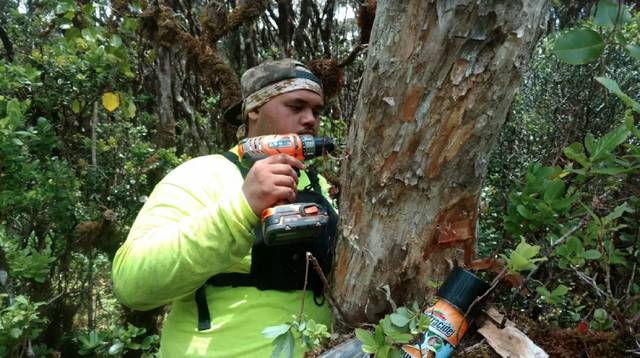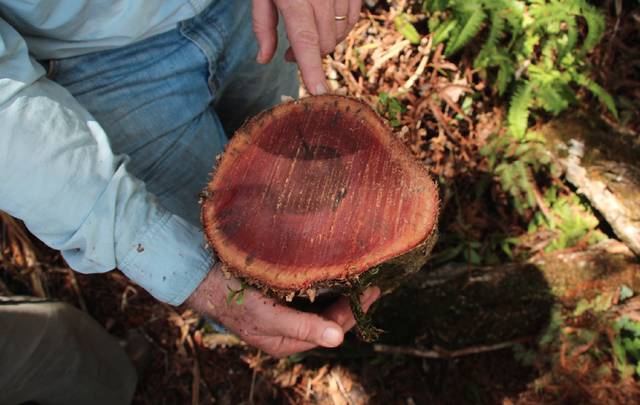Rapid ohia death has been detected in North Kohala, the Big Island Invasive Species Committee said Friday, confirming the disease now has spread to every district on Hawaii Island. ADVERTISING Rapid ohia death has been detected in North Kohala, the
Rapid ohia death has been detected in North Kohala, the Big Island Invasive Species Committee said Friday, confirming the disease now has spread to every district on Hawaii Island.
The discovery occurred Sept. 15 on a private ranch in Kohala. Researchers collected 10 samples at the site, eight of which tested positive for Ceratocystis, the more harmful of two newly identified fungal species that cause the disease in ohia.
“The disease now exists from north to south to east and west across the island,” said J.B. Friday, extension forester with the University of Hawaii at Manoa’s College of Tropical Agriculture and Human Resources on Friday. “There are still a lot of forests not infected … this is only one detection in all of Kohala … but there’s no district on the island we now don’t have positive (detection).”
Experts aren’t yet sure how the fungus arrived to the island’s northernmost district. Crews are sampling more trees in the infected area during the coming weeks to better assess its cause and how much it has spread.
Researchers also are assessing whether the fungus arrived via wind-borne sawdust created from drilling activity of beetles attracted to dead and dying ohia trees.
ROD hasn’t yet been reported on any other island, but the latest detection prompts worry it could spread by wind-borne fungus to other parts of the state.
Maui is only 40 miles away from the latest infected Kohala site, forest ecologist Flint Hughes said in a Friday news release, and the Kohala site is just 33 miles from the nearest infested site previously found.
ROD has spread throughout Puna, Hilo and Kona since 2012. It’s affected more than 75,000 acres of endemic ohia trees on the island. More than 200,000 ohia trees died between 2015 and 2016 alone.
Friday called the latest discovery in Kohala “discouraging” but said “no one is throwing in the towel.”
“We’re going full bore to get it contained,” he said. “… We think the disease will be a manageable disease in many areas. There are clearly some areas where it’s just taken off, but in other areas we don’t think it will be so bad. We’ve now found a spot in Kohala, but our hope is that it will be manageable and remain in isolated spots. But it’s islandwide now.”
BIISC spokeswoman Franny Brewer said researchers also hope to seek funding from the 2018 Legislature to further study ROD. She said “the more money we can get, the more we can research potential solutions and how to stop it.”
“It’s really difficult to try and get a grip on a brand new disease,” Brewer said. “We’re starting from scratch.”
Email Kirsten Johnson at kjohnson@hawaiitribune-herald.com.




